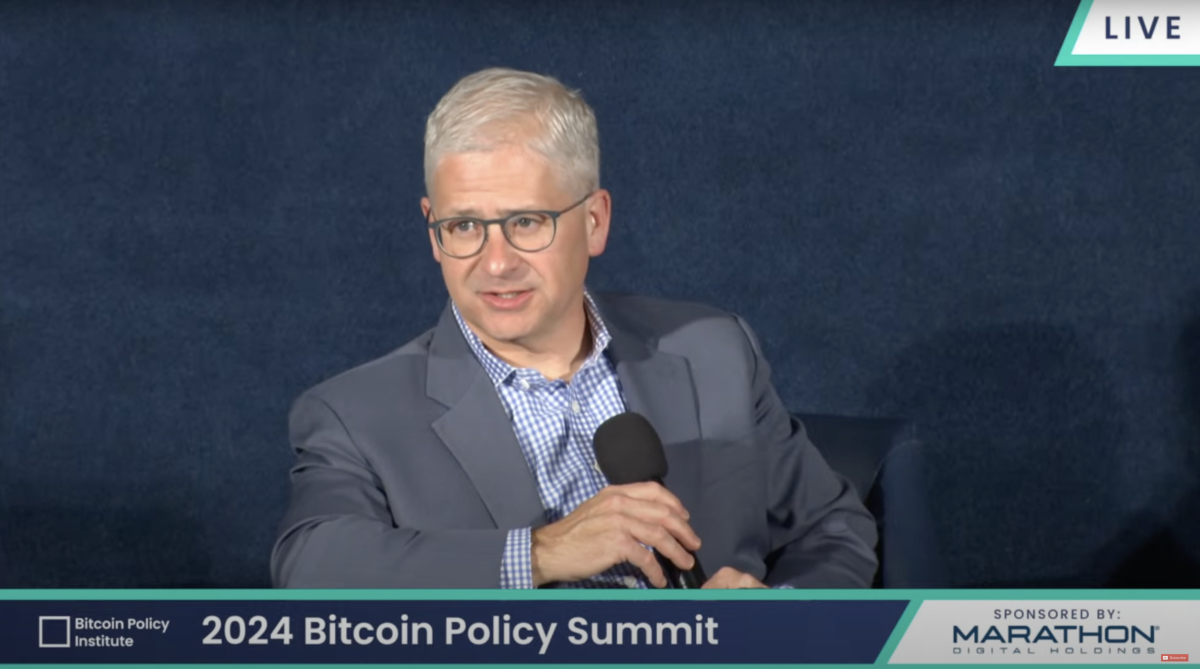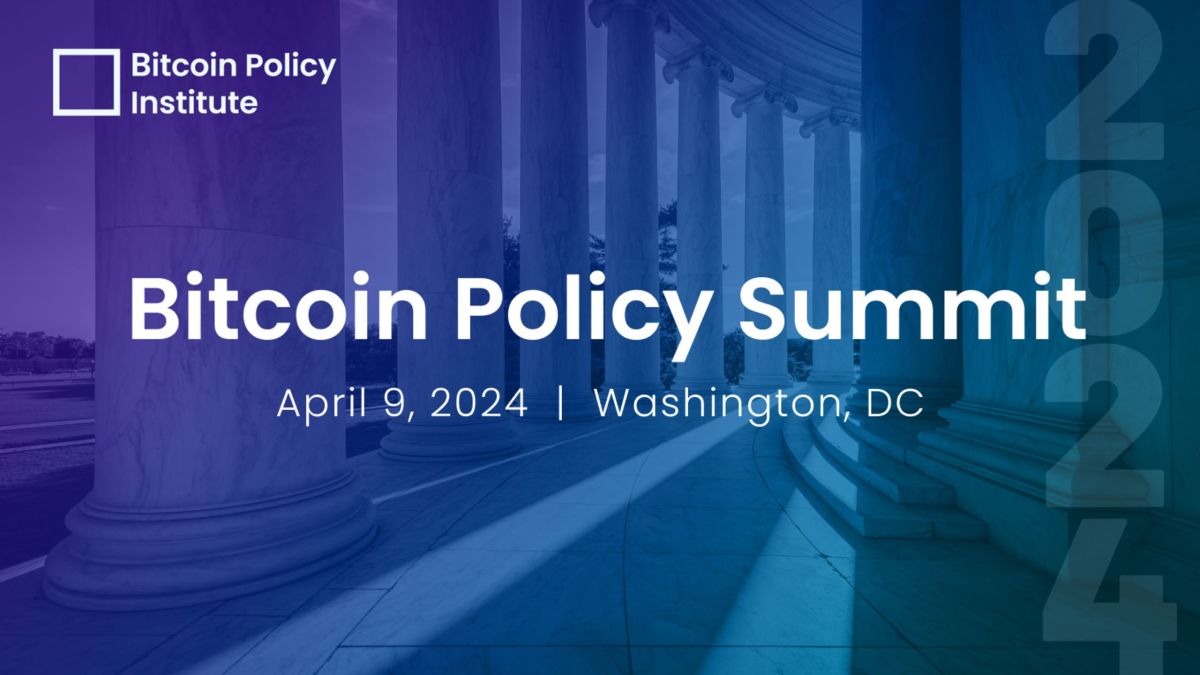Month: April 2024
Asia FX treads water, dollar flat amid US inflation angst
Post Content
US dollar flat as investors await inflation data; focus on yen action
Post Content
The BitVM Liquidity Crunch Issue
BitVM has recently come under some scrutiny after the Taproot Wizards, Tyler and Rijndael, posted their criticism of the liquidity requirements imposed on the operator of a BitVM based two-way peg. In all the recent discussions around BitVM based layer two solutions, I had taken for granted that people discussing them and interested in the design space understood the collateralization/liquidity requirements imposed by the architecture on the operator(s). The recent discussion around the “liquidity crunch” issue shows me I was incorrect about this assumption, and that many people outside of those actively involved in BitVM development were not aware of this issue.
Before I go into the liquidity crunch issue, I think it’s important to clarify one of the unique properties of a BitVM peg (called bridges by altcoin developers). In bridges built on other networks, the funds held in the actual bridge contract controlling the movement of funds between networks are what is used to actually process withdrawals. In the case of a BitVM peg, these funds are not accessible in order to fulfill withdrawals. The operator of the system (rollup, sidechain, etc.) must actually front their own liquidity in order to process user withdrawal requests.
As user withdrawal requests come in, the operator actually moving the rollup state forward looks at every request, and processes those withdrawals using their own personal funds. After a period, the system then check-points its state in a cutoff committing to all pending withdrawals. After the operator has fulfilled all pending withdrawals from the last state they can then engage in a claim process from the BitVM secured funds to make themselves whole for all the capital they have fronted. The BitVM contract is established so that operators can have their ability to claim these funds revoked if they have not honored all pending withdrawals from the last state.
So the general user flow is a deposit goes into a contract secured by BitVM, the operator fronts their own capital to process withdrawals, and then periodically the operator compensates themselves for the money they’ve spent out of pocket from the BitVM contract. This sets a BitVM peg apart from any other type of two way peg, introducing a liquidity requirement similar to the Lightning Network.
The Liquidity Crunch
The problem that Taproot Wizards identified in their write up is a result of the combination of the up-front liquidity requirements imposed on the operator and the fraud proof scheme that allows the verifiers of the BitVM to revoke the operator’s access to funds if they have not fulfilled all withdrawals in a given rollup epoch. This creates a big potential problem for the system, and particularly for the operator.
For now let’s completely ignore the potential scenario of an operator intentionally refusing to process a withdrawal due to malicious censorship. That is not a concern for now in looking at the potential problems, as if an operator did such a thing, they should have their access revoked and incur the loss of whatever funds they have already spent on processing withdrawals.
It is absolutely possible for an honest operator to run into a situation where, through no malicious intent on their part, they do not have access to enough liquidity to process the withdrawals pending in a single rollup epoch. If this were to occur, then an otherwise honest operator can now not compensate themselves from the BitVM contract for what they have processed without opening themselves up to a single verifier challenging them and resulting in them permanently losing access to the funds. Everything that they have spent processing withdrawals in that epoch would be lost funds they could not recover.
This creates a big risk for a peg operator. Through no malicious action at all, simply through limitations of their own funds, interest rates increasing in borrowing funds, just factors of time required to access funds, they can lose a massive amount of money. This introduces a big potential instability in the peg, and it also begs the question where does the users’ money go in the event of an operator being hit with a fraud proof?
The Options
The important thing to note is that where the ultimate dead end destination of funds is depends on particular design choices made by the implementers of any given peg. There is a good degree of freedom available in design choices, the end destination of funds after a challenge ejects an operator has multiple options, the period after an epoch end that an operator has to fulfill all withdraws is configurable, none of these things are set in stone as a single possible way to configure them.
So now that we understand the problem let’s look at some potential solutions.
Throttling
You could address the issue by throttling withdrawals. This would entail creating a maximum limit of funds that an operator could be bound by the contract to fulfill in any given rollup epoch. This would allow the operator to ensure that they had enough capital in order to process the maximum amount they have to. Each period the operator could process that many withdrawals, go through the claim process to compensate themselves from the BitVM contract, and then in the next epoch recycle that amount to fulfill the next wave of withdrawals.
The problem with this is you don’t know when a large uptick in funds pegged into the system will occur, and you also don’t know when market activity will align to incentivize a massive amount of money to want to peg out of the system. As more funds are pegged in, the possibility of a large increase in the volume wanted to peg out at once increases. This dynamic essentially leads to an ever growing queue to get out of the system unless you increase the maximum epoch withdrawal amount, which also increases the liquidity requirements for the operator.
This exacerbates the liquidity requirement these pegs have, and essentially creates a huge friction to withdrawals. Swap outs do not solve the issue, as this ultimately traps the counterparties liquidity in this ever growing queue, unlike other two way pegs where they could exit practically immediately after facilitating the swap.
Multiple Operators
Both BitVM 1 and BitVM 2 support having multiple verifiers in different ways, allowing more than one more to participate and be capable of revoking an operator’s access to funds. It is also possible in BitVM 2 (and some BitVM based pegs such as the Citrea rollup) to have multiple operators working in parallel. More than one entity can help process withdrawals from the peg, so multiple pools of liquidity are available to facilitate the peg.
This would in principle make the entire liquidity dynamic much more scalable, as it would no longer be limited to a single entity having to front the liquidity to facilitate timely withdrawals from the system, but it introduces questions of complexity. Each UTXO deposited into the BitVM peg and bound by the contract needs to have the terms of claiming defined. That contract needs to now be able to distinguish between multiple operators, and ensure a means of distinguishing which withdrawals are associated to which operator, and ensure they can only claim what they have facilitated rather than funds meant for a different operator.
It also needs to take into account how to handle the global withdrawal demand that all operators exist to facilitate. What if every operator has used all the capital they have, but there is still unmet demand? Do they all have access to BitVM funds revoked? None of them? Is there some rollover grace period similar to having a queue throttle? If there is, who is responsible if those withdrawals still aren’t facilitated the next epoch? These are all things that need to be concretely worked out.
Multiple Linear Operators
In addition to having multiple parallel operators, you could have a chain of linear operators. A single operator could function at a time, facilitating withdrawals, and if they were to ever run into a liquidity problem and had their access revoked from the BitVM funds the funds after a challenge/revocation process could be immediately sent to a new BitVM with a new operator. This would not address at all the risk of a single operator suffering a liquidity crunch, and they would realize the loss of whatever withdrawals they already deposited, but it would ensure someone else could step in and have a chance to continue facilitating withdrawals with the ability to claim compensation from the BitVM.
This however adds a good deal of cost to the peg-in process. Generating a BitVM instance is not cheap in terms of data and interactivity, meaning that to chain linear BitVM operators together like this, you must generate for peg-ins that number of BitVMs.
The Backstop
In all of the cases of any peg using BitVM, there is one ultimate question: where do the funds eventually go in the worst case failure? There are ultimately two options. Either you actually burn the funds, or you put them under the control of a verifier. The first means that users’ funds are now destroyed, and everyone holding funds in the peg is now rugged. The second means that the trust model has shifted outright to trusting an individual verifier or group of verifiers in a federation who unilaterally control the funds.
Burning the funds is a non-starter in a model without a withdrawal throttle, as that would validate the worst-case scenario concerns voiced by Taproot Wizards. A consistent failure case of operators, regardless of parallel or linear, would result in users’ funds actually being destroyed. The only model this would be remotely safe in, would be with a withdrawal throttle; but even then if the operator(s) defined by the contract were to disappear or have their access revoked, the risk of permanent fund loss would still exist.
So that leaves putting the funds back under the control of a single verifier or a group of them. In the event of a total failure of all operators, this would allow the verifier(s) involved in the system to recover users’ funds and make them whole. I don’t think this is that bad.
Every BitVM instance is set up with an n-of-n multisig that handles signing all the pre-signed transactions involved in the BitVM contract. The ultimate root security model of the entire scheme is that a single one of those key holders must remain honest, and refuse to sign a dishonest dispersion of funds, in order for the system to be secure.
That same security model can be applied to where funds go (minus the operator(s)) in the event of a total operator failure. That introduces the risk of a single key being lost or not cooperating burning funds though, so you could also just make it a conventional m-of-n multisig.
I see no problem in this type of set up at all, it accomplishes the goal of ensuring users’ funds are not irrevocably burned without creating a wild alteration to the trust model. Ultimately if you are not a direct participant of the BitVM contract, i.e. holding one of those n-of-n keys yourself, you are still trusting a federation of some sort. Only needing to trust a single member to be honest to keep things safe is obviously superior to having to trust 3 people in a 5-of-7 multisig, but it is still a form of delegated trust.
Wrapping Up
At the end of the day, I think the liquidity crunch issue identified by Taproot Wizards is a very legitimate issue. Depending on the specific architecture of the peg in question, it could introduce problems from completely burning users’ funds, to losing operators’ funds even without malicious action, to simply creating an ever growing queue to exit without either halting deposits or falling back on the n-of-n group to bypass the queue.
It is not however, in my opinion, something that means the idea of using BitVM to secure a two way peg is a fundamentally broken idea. I think I’ve laid out a good number of ways that specific implementations could backstop or mitigate the issue, and ultimately the reality of the n-of-n group existing and the potential to push funds in a failure case to a delegated group to handle withdrawals could address the risk of permanent loss of funds.
As a last note, the pace of development in this space has hit a pace in the last year or so that I have never seen in my time here, I think it is important when discussing these developments to step back and keep a calm head while looking at the discussions that occur over trade-offs and risks. Yes, public perception is an aspect of these conversations happening in public, but these discussions should be rooted in the goal of arriving at an accurate understanding of the issues at hand. That should not take a backseat to trying to illicit or defend any particular public perception first.
The U.S. Needs To Lead in Bitcoin, Says Congressman Patrick McHenry
At the Bitcoin Policy Summit in Washington DC today, U.S. Congressman Patrick McHenry (R-NC) emphasized the importance of the United States taking a leadership role in Bitcoin and not lagging behind in during a fireside chat with Club for Growth President David McIntosh.
JUST IN: 

— Bitcoin Magazine (@BitcoinMagazine) April 9, 2024
“This is where the action is, this is a bastion of freedom,” McHenry stated when asked why he was speaking at the Bitcoin Policy Summit this morning. “The way I view Bitcoin is — what Satoshi brought into this world has been unstoppable. Every regime that has tried to shut it down as failed, even the Chinese communist party that tried to shut down Bitcoin couldn’t. And so it is an unstoppable piece of technology.”
McHenry, known for his advocacy of financial innovation and technology, emphasized the need for his collogues in office to become educated on Bitcoin, acknowledging the challenges of regulating this technology with uninformed policy makers.
“The dumbest way to try to obscure your transactions are to do them in public,” McHenry explained. “And the level of embarrassment when senators and members of the house ask questions about this on how to obscure these transactions. And when you have to explain to them that this is an open ledger that people can see the movement of value, and they don’t understand that…Cash is still king in illicit finance.”
The congressman further highlighted how “it is a much easier conversation” to have with fellow politicians if they were to read the Bitcoin white paper by Satoshi Nakamoto before coming together to legislate. McHenry said that the lack of understanding of Bitcoin amongst policy makers has resulted in them going down rabbit holes of misinformation. And that causes them to speak in truths while legislating, based off of that information.
Overall, McHenry’s message at the Bitcoin Policy Summit reflected a sense of urgency and opportunity, urging the United States to embrace its potential as a leader in the Bitcoin revolution and chart a course for a dynamic and innovative future in finance and technology.
“I’m trying to convince policy makers on the hill to embrace and for the United States to be leaders in, rather than fall behind. And I want to make sure you all hear that message clearly,” Congressman McHenry said.
For more information about the annual Bitcoin Policy Summit, including the full agenda and list of speakers, visit BPI’s website here. The official Bitcoin Policy Summit live stream can be found on YouTube and X (Twitter).
WATCH: The Bitcoin Policy Summit is Happening Now in Washington, DC
The second annual Bitcoin Policy Summit by the Bitcoin Policy Institute begins today in Washington, DC and features leading bipartisan lawmakers, Bitcoin experts and human rights advocates.
Congressional representatives include Cynthia Lummis (R-WY), Kirsten Gillibrand U.S. Senator (D-NY), Wiley Nickel (D-NC), Marsha Blackburn (R-TN), and Majority Whip of the U.S. House of Representatives Tom Emmer (R-MN).
The summit is exploring the intersection of Bitcoin and politics, ranging from geopolitical considerations in the context of the incumbent U.S. dollar system, the environmental impacts of bitcoin mining, as well as Bitcoin’s importance for human rights in the U.S. and abroad.
Headlining the conference are notable speakers who are set to share their perspectives on Bitcoin and its broader impact across economics, national security and energy systems.
These include:
Mining in America: A Fireside Chat with Senator Cynthia LummisFred Thiel – CEO, Marathon Digital HoldingsCynthia Lummis – U.S. Senator (R-WY)Bitcoin & Financial Inclusion: A Fireside Chat with Chastity Murphy, U.S. TreasuryGrant McCarty – Co-Executive Director, Bitcoin Policy InstituteChastity Murphy – Senior Advisor to the Assistant Secretary of Financial Institutions, U.S. Treasury The State of Bitcoin’s Global Adoption & Technology EcosystemAlex Thorn – Head of Research, GalaxyCharlene Fadirepo – CEO, Mango Digital StrategiesAlyse Killeen – Founder and Managing Partner, StillmarkWolf Von Laer – CEO, Students for LibertyTom McDivitt – CRO, Government Solutions, EllipticBitcoin Against Autocracy: A Modern Tool for FreedomFelix Maradiaga – Human Rights Defender & 2024 Nobel Peace Prize NomineeCrypto & Illicit FinanceMatthew Pines – Director, Security Advisory at Sentinel One & BPI National Security FellowKen Egan – Head of Operations, BlocktraceMeredith Fitzpatrick – Director of Cryptocurrency Investigations and Compliance, Forensic Risk AllianceSam Lyman – Director of Public Policy, Riot Platforms
Furthermore, the conference is set to feature insights from key players in the Bitcoin industry, including Mike Brock, the CEO of Block’s TBD, Avik Roy, the President of Foundation for Research On Equal Opportunity and BPI Senior Advisor, as well as Ben Gagnon, the Chief Mining Officer of Bitfarms.
The Bitcoin Policy Summit is poised to be a significant milestone in the bipartisan dialog on Bitcoin and digital assets generally and aims to educate policymakers on key priorities in the ecosystem.
For those unable to attend in person, a live stream of the event is available on the Bitcoin Magazine YouTube channel as well as X (Twitter), ensuring that the insights and discussions from the Bitcoin Policy Summit can reach a global audience of stakeholders, political leaders and industry participants.
The Next MicroStrategy? Japanese Public Company Is Buying Bitcoin
Japanese firm Metaplanet announced it is purchasing 1 billion yen (about $6.5 million) worth of Bitcoin as part of its corporate treasury strategy, a move that mimics MicroStrategy’s high-profile Bitcoin accumulation.
Metaplanet, a publicly traded company listed on the Tokyo Stock Exchange, a diversified enterprise, revealed the Bitcoin buying initiative on X. The company cited hedging risks from currency devaluation and inflation as motivations.
The announcement said the purchase is an “initial commitment” and part of a broader embrace of Bitcoin’s potential. Partners like legendary hedge fund manager Mark Yusko, UTXO Management, and Sora Ventures support it.
By adopting a Bitcoin treasury reserve similar to MicroStrategy, Metaplanet aims to benefit from Bitcoin’s upside while mitigating risks. MicroStrategy has pioneered the corporate Bitcoin treasury strategy, buying over $6 billion worth of BTC since 2020.
Metaplanet’s stock price spiked 89.47% on Tuesday following the Bitcoin announcement.
JUST IN: 
The #Bitcoin Effect 
— Bitcoin Magazine (@BitcoinMagazine) April 9, 2024
Jason Fang of Sora Ventures called Metaplanet “Asia’s first MicroStrategy” for replicating its Bitcoin focus.
The move also provides Japanese investors indirect Bitcoin exposure without high unrealized gains taxes, which can reach 55% in Japan. Metaplanet’s Bitcoin funds will be held in a tax-advantaged structure only accessible by the company.
By buying Bitcoin, Metaplanet joins the growing list of public companies utilizing Bitcoin to maximize shareholder value. With MicroStrategy proving the model’s effectiveness, more institutional adoption is likely.
For Metaplanet, Bitcoin offers opportunities beyond investment gains like accelerating its Bitcoin initiatives.
The announcement is a bullish sign for Bitcoin’s traction in Asia. Metaplanet is giving investors a regulated path to gain BTC exposure. If successful, expect more public companies in the region to follow its template.
Asia FX muted ahead of US inflation data; USDJPY nears 152
Post Content
Policymakers, Industry Leaders To Gather in Washington, DC for Annual Bitcoin Policy Summit
Leading Bitcoin advocates, academics and a bipartisan coalition of United States policymakers are set to gather at the National Press Club Ballroom in Washington, DC for the second annual Bitcoin Policy Summit hosted by the Bitcoin Policy Institute (BPI). Bitcoin Magazine is partnering with BPI to host a live stream of the event on its YouTube channel and social media platforms.
With a lineup featuring politicians Senator Cynthia Lummis (R-WY), Congressman Patrick McHenry (D-NC), Wiley Nickel (R-NC), Senator Marsha Blackburn (R-TN), Congressman Tom Emmer (R-MN), and Senator Kirsten Gillibrand (D-NY), the summit is gearing up to be a nexus of Bitcoin and the political sphere in the United States. The participation of the aforementioned lawmakers underscores a clear bipartisan recognition of the importance of understanding and shaping the future of Bitcoin and digital asset policy work.
Notably, Senators Lummis and Gillibrand have co-authored legislation in the Lummis-Gillibrand Responsible Financial Innovation Act. The bill, drafted in 2022, is a significant example of an emerging bipartisan effort to create a comprehensive regulatory framework for digital assets.
Senator Gillibrand expressed her excitement for the upcoming summit, stating in a press release sent to Bitcoin Magazine, “As a leader on this issue, I look forward to sharing my ideas and hearing from attendees on how we can write smart policy that allows for responsible innovation, has robust consumer protections, and enables us to root out bad actors.”
As the growth and economic integration of Bitcoin and digital assets continues, the summit’s agenda reflects challenges and opportunities presented therein. Discussions will explore into the regulatory frameworks governing Bitcoin financial products and services as well as strategies to foster innovation while protecting civil liberties.
“As a member of the House Financial Services Committee, I’m working to find common ground and advance common sense legislation on Bitcoin and crypto,” said Congressman Wiley Nickel. “I look forward to sharing an update on the work that we’re doing and hoping to accomplish during the rest of the 118th Congress.”
Geopolitical considerations will take the stage in the “Geopolitics of Bitcoin” panel featuring SentinelOne Director Matthew Pines, BlockTrace Head of Operations Ken Egan, Bridger Solutions Co-founder and CEO Jake Langenkamp, and Foundry Vice President of Public Policy Kyle Schneps, as they analyze the implications of Bitcoin and digital assets for the dollar monetary system and global power dynamics.
The summit will also examine the environmental and climate impacts of bitcoin mining operations. Panelists Troy Cross, a Professor at Reed College, and Brian Consolvo Partner at KPMG, are set to speak in a fireside chat: “How Institutions Consider Bitcoin’s Sustainability”. In addition, the use of geothermal energy will be a focal point as the Office Director for the Geothermal Technologies for the U.S. Department of Energy, Lauren Boyd, will also be hosted as a summit participant.
“The annual Bitcoin Policy Summit represents a unique opportunity for collaboration and dialogue among stakeholders from diverse backgrounds,” stated David Zell, Founder of the Bitcoin Policy Institute. “By fostering an inclusive conversation, we can develop informed and effective policies that support innovation while safeguarding the interests of all stakeholders.”
For more information about the annual Bitcoin Policy Summit, including the full agenda and list of speakers, visit BPI’s website here.
The official Bitcoin Policy Summit live stream can be found on YouTube here.
Dollar bulls to continue stampede as hawkish Fed speak to boost Treasury yields
Post Content
US dollar skids ahead of inflation data; yen not far from 1990 lows
Post Content








